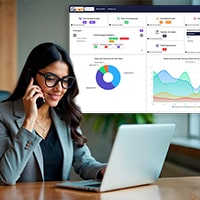
Shopify Website: Website speed is the most critical elements of any well-rounded eCommerce store. In fact, website speed is one of the essential factors in the success of an eCommerce business. It helps to enhance SEO ranking and provides a better user experience (UX) to the visitors. Your website may look perfect, but if your website is slow, users can get frustrated and leave the site.
Minify and connect files
Now that you know how many requests your website performs, you can get to work on reducing that number. The most excellent place to get started is with your HTML, CSS, and JavaScript files. These are important files, as they discover your Ecommerce website development appearance.
They also combine to the number of requests your site performs every time a user visits it. You can overcome this number by “minifying” and combining your files. This decreases the size of each file, as well as the total number of files.
This is especially crucial if you utilise a templated website builder. These make it easy to develop a website, but they sometimes create messy code that can slow your site considerably. Minifying a file includes excluding unnecessary formatting, whitespace, and code.
Utilize Caching and In-memory Technology
Utilize caching or else in-memory technologies to avoid obtaining a database unnecessarily. Those technologies can temporarily store in memory a sufficient eCommerce product catalogue, all customer data, site-search indexes, and also other data, which would avoid calls on the database. The technology utilizes the RAM accessible on a server and also stores data in it. Whether input-output operations are typically 3X times faster on RAM than a hard disk, this will helps to develop performance.
Compress Data
Utilize compression software to reducing the size of the data sent to a browser. As well as, the compression is done on the server-side, before turning data based on the client request. It needs changing server configuration files, which its takes developer expertise. Before providing data compression using Shopify Website, make sure your customers do not utilise older browsers.
Investigate Weak Performance
Before we start, let’s simplify that the site load speed should be understood as the load speed of a single page. It is not of the whole site. Various types of pages may comprise various amounts of content, CSS, JS files, and images. While the importance of every page will be slightly various, meaning these pages will need different amounts of time to be fully loaded.
It is effectively inconceivable to check each page of an online store. Because of this, to run a quality achievement analysis, you should examine the homepage, category page, and product page separately. These are the most common customer entry points that should always perform perfectly using website designing company.
Avoid Redirects
In order to, minimize the redirects on your website if you have to utilize them. Each redirect is a separate request to the server that improves load times. Often, retailers proceed to manage redirects from old links to the new ones. These redirects should be removed when most shoppers have begun accessing the new URLs directly.
Specify Image Dimensions
Both height and width for images so that the browser can build placeholders for the images, to load the pages and the images simultaneously. At the same time, retailers often create an image without defining the dimensions of the image on the page. This makes the browser to load the image completely before it begins another task, which takes more time.
Simple height and width attributes for every image makes the browser experience the size of the images and it can generate room for the image while also loading other parts of the page. For the purpose of, automatically alter image sizes for various types of devices – Shopify Website laptop, tablet, or else smartphone.


